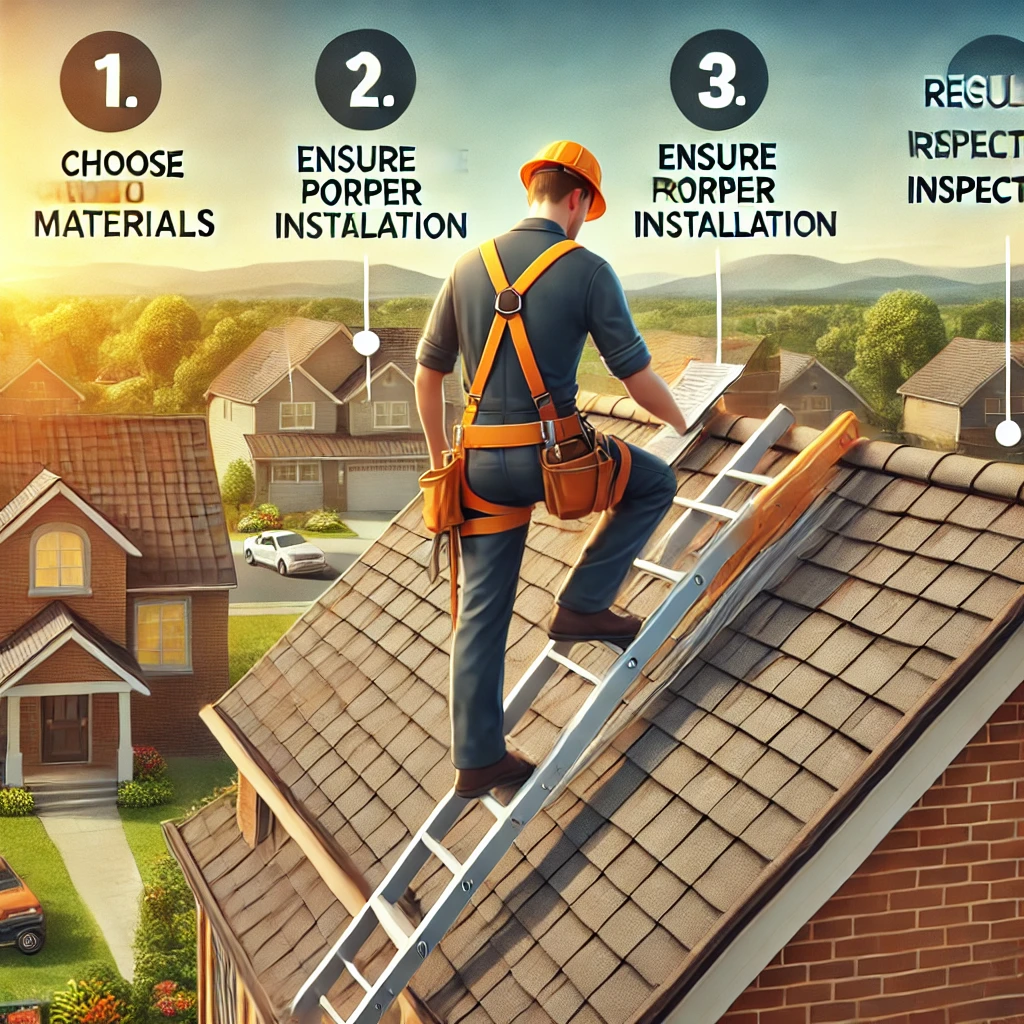When it comes to maintaining the integrity of your home, the roof is one of the most critical components. Whether you’re considering a roof repair, a complete roof replacement, or simply maintaining your existing roof, employing proper roofing techniques can significantly extend its lifespan and enhance your home’s overall durability. Here are six essential ways to ensure you roof is right.
1. Choose the Right Materials for Your Roof
Selecting the right materials for your roofing project is crucial. Different materials come with varying lifespans, costs, and aesthetic appeals. For instance, shingle roof replacement is a popular choice for residential properties due to its affordability and versatility. However, if you’re looking for durability, you might consider metal roof replacement, which offers longevity and resistance to harsh weather conditions.
Before making a decision, consult with roof repair specialists or roof replacement contractors who can provide insights tailored to your specific needs. They can help you understand the benefits of each material and suggest the best options based on your location, climate, and architectural style. It’s also important to consider the local building codes and regulations that might affect your choice of materials.

2. Proper Installation is Key
Even the highest quality materials won’t perform well if they aren’t installed correctly. Engaging experienced roof repair contractors is essential to ensure proper installation. For example, when replacing shingles, it’s crucial to follow the manufacturer’s guidelines meticulously. Poor installation can lead to issues like leaks, which might necessitate costly home roof repairs down the line.
If you’re opting for a flat roof replacement, special techniques such as using a membrane can prevent water accumulation and enhance the roof’s longevity. Proper ventilation and insulation during installation are also important to prevent moisture buildup in your attic, which can lead to mold growth and compromise the integrity of your roof. Always verify the credentials of your roofing professionals to ensure they have the expertise needed for your specific type of roof.
3. Regular Maintenance and Inspections
Routine maintenance is vital to prolonging the life of your roof. Scheduling regular inspections with roof repair specialists can help identify potential problems early, such as damaged shingles or leaks, allowing for timely roof repair services before they escalate into significant issues.
You might wonder, “How often should a roof be replaced?” While the answer varies based on materials and local conditions, most roofs last between 20 to 30 years. Regular maintenance can push that lifespan even further, reducing the need for frequent roof replacements.
Additionally, homeowners should stay proactive in addressing any signs of wear and tear. For example, if you notice curling or missing shingles, it’s time to consult with your roof replacement contractor for an assessment and possibly a roof replacement estimate. Taking care of small issues immediately can save you from more extensive and costly repairs in the future.
4. Be Aware of Seasonal Changes
The weather can have a significant impact on your roof’s performance. It’s essential to understand how different seasons affect roofing materials and to adjust your maintenance routine accordingly. For instance, heavy snowfall can add extra weight to your roof, potentially leading to sagging or even collapse if the load is too heavy.
After winter, it’s wise to inspect your roof for any signs of damage. Look for missing shingles, cracked flashing, or any leaks that may have developed due to the freeze-thaw cycle. In spring, perform a thorough inspection and consider scheduling a roof repair estimate if you notice any concerns. On the other hand, during the summer, UV rays can deteriorate roofing materials, so ensure your roof is in good condition to withstand the heat.
5. Know When to Replace Your Roof
Every homeowner should be aware of the signs that indicate it’s time to consider a roof replacement. Frequent repairs, visible sagging, or extensive water damage are clear indicators that your roof may be nearing the end of its life. It’s important to consult with roof replacement companies to assess the condition of your roof and determine if a complete replacement is necessary.
Also, consider the age of your roof; most roofs have a lifespan of 20 to 30 years. If your roof is approaching this age, it might be a good idea to start planning for a roof replacement service. Engaging with a knowledgeable roofing professional can provide valuable insights into whether you should repair or replace the roof based on its current condition.

6. Communicate with Your Roofing Team
Good communication with your roofing team can make a significant difference in the outcome of your roofing project. Ensure that you discuss all aspects of the project, including timelines, costs, and any potential disruptions. If you’re concerned about your living situation during the project, you might ask, “Should I stay home during roof replacement?”
Many homeowners prefer to vacate their homes during a major roof replacement for comfort and safety. However, if you choose to stay, make sure to discuss any safety concerns with your roofing team so they can keep the workspace secure and accessible. Clear communication will ensure that everyone is on the same page and can address any issues that arise during the project promptly.
Conclusion
Proper roofing techniques are essential for maintaining the safety and comfort of your home. From choosing the right materials to ensuring professional installation and regular maintenance, following these steps can help you avoid costly repairs and extend the life of your roof. If you have questions about your roof’s condition or need a roof repair estimate, don’t hesitate to reach out to Surface Roofing. Our team of experienced professionals is here to help with all your roofing needs, ensuring you have a sturdy and reliable roof over your head.







